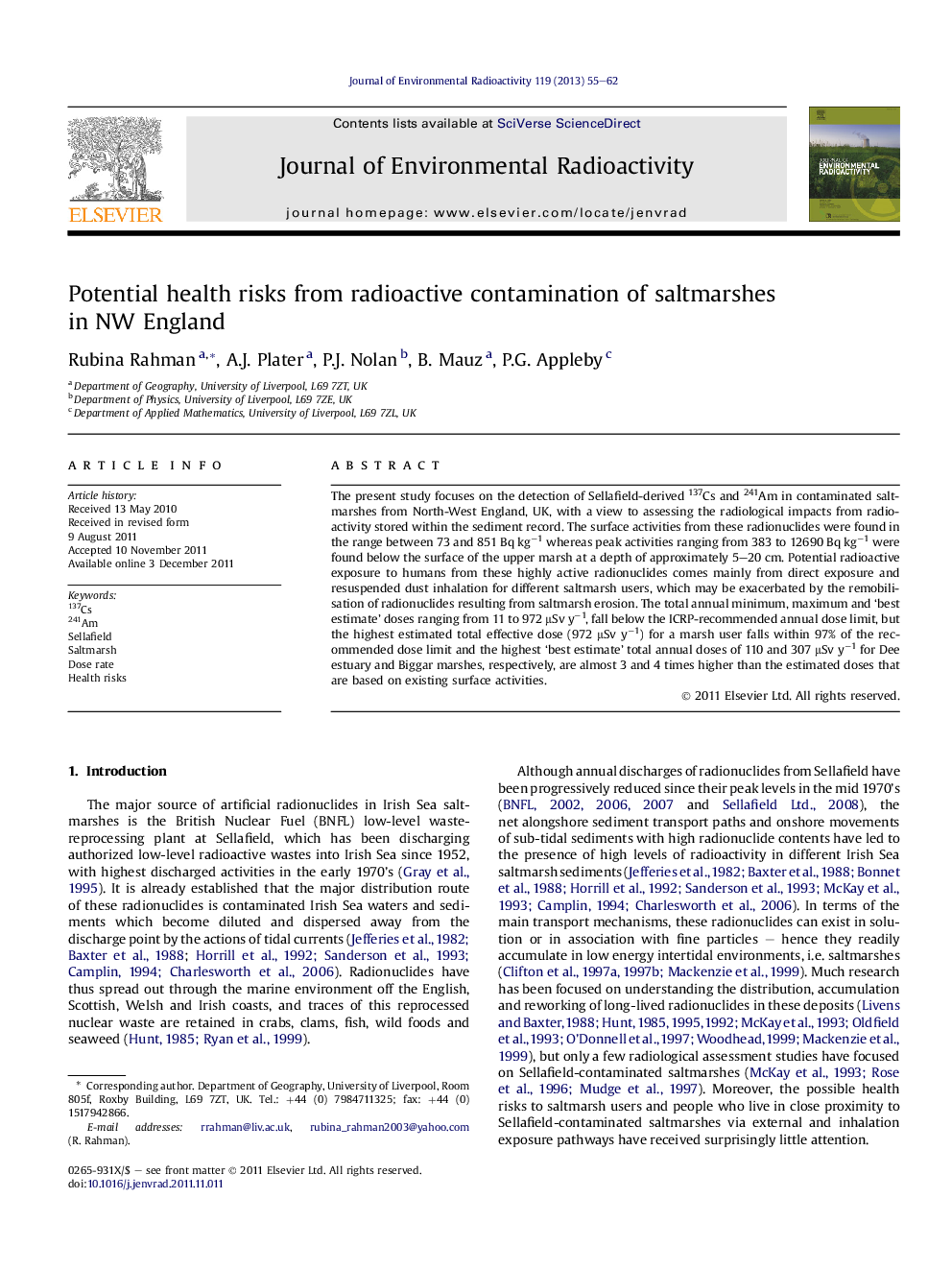| Article ID | Journal | Published Year | Pages | File Type |
|---|---|---|---|---|
| 1738260 | Journal of Environmental Radioactivity | 2013 | 8 Pages |
Abstract
The present study focuses on the detection of Sellafield-derived 137Cs and 241Am in contaminated saltmarshes from North-West England, UK, with a view to assessing the radiological impacts from radioactivity stored within the sediment record. The surface activities from these radionuclides were found in the range between 73 and 851 Bq kgâ1 whereas peak activities ranging from 383 to 12690 Bq kgâ1 were found below the surface of the upper marsh at a depth of approximately 5-20 cm. Potential radioactive exposure to humans from these highly active radionuclides comes mainly from direct exposure and resuspended dust inhalation for different saltmarsh users, which may be exacerbated by the remobilisation of radionuclides resulting from saltmarsh erosion. The total annual minimum, maximum and 'best estimate' doses ranging from 11 to 972 μSv yâ1, fall below the ICRP-recommended annual dose limit, but the highest estimated total effective dose (972 μSv yâ1) for a marsh user falls within 97% of the recommended dose limit and the highest 'best estimate' total annual doses of 110 and 307 μSv yâ1 for Dee estuary and Biggar marshes, respectively, are almost 3 and 4 times higher than the estimated doses that are based on existing surface activities.
Related Topics
Physical Sciences and Engineering
Energy
Nuclear Energy and Engineering
Authors
Rubina Rahman, A.J. Plater, P.J. Nolan, B. Mauz, P.G. Appleby,
